
The Lely Venus is a marble statue of the crouching Venus type. It is a copy of a Hellenistic original by Doidalses of Bithynia and dates from the Antonine period.

The Lely Venus is a marble statue of the crouching Venus type. It is a copy of a Hellenistic original by Doidalses of Bithynia and dates from the Antonine period.
The statue is first recorded in the Gonzaga collection in Mantua, where it was inventoried in 1627 [1] Whilst there it was seen by Peter Paul Rubens, who stayed with the Gonzaga family whilst on the continent on diplomatic and art-collecting duties for Charles I of England. It was an important influence on his voluptuous style of painting the female nude, so much so that it appeared at the National Gallery's "Rubens: A Master in the Making" exhibition from 26 October 2005 to 15 January 2006 [2]

It was soon purchased from the Gonzagas, in 1627–28, for King Charles I of England, [3] It was remarked in England in 1631 as "the finest statue of all" and valued at 6000 ecus. [4] On the dispersal of Charles's art collections during the Commonwealth, it came into the possession of the painter and connoisseur Sir Peter Lely, from whom it derives its name. [5] Two years after Lely's death (1682), it was re-acquired from his heirs for the Royal Collection. The statue was stolen from the Palace of Whitehall after it was destroyed by fire on January 4, 1698, and was recovered four years later by the Crown. [6] [7]
Since 2005 it has been on long-term loan to the British Museum, following treatment by their conservators, and is currently on display in gallery 23. [8]
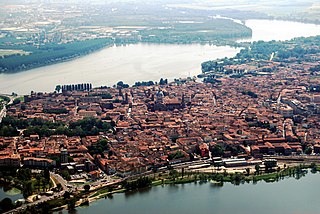
Mantua is a comune (municipality) in the Italian region of Lombardy, and capital of the province of the same name.

Simon Vouet was a French painter who studied and rose to prominence in Italy before being summoned by Louis XIII to serve as Premier peintre du Roi in France. He and his studio of artists created religious and mythological paintings, portraits, frescoes, tapestries, and massive decorative schemes for the king and for wealthy patrons, including Richelieu. During this time, "Vouet was indisputably the leading artist in Paris," and was immensely influential in introducing the Italian Baroque style of painting to France. He was also, according to Pierre Rosenberg, "without doubt one of the outstanding seventeenth-century draughtsmen, equal to Annibale Carracci and Lanfranco."

Vincenzo Ι Gonzaga was the ruler of the Duchy of Mantua and the Duchy of Montferrat from 1587 to 1612.
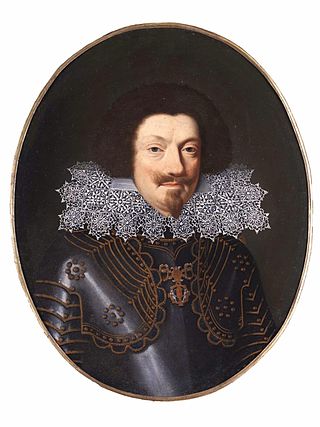
The War of the Mantuan Succession (1628–1631) was a conflict related to the Thirty Years' War and was caused by the death in December 1627 of Vincenzo II, the last male heir in the direct line of the House of Gonzaga and the ruler of the duchies of Mantua and Montferrat. Those territories were key to control of the Spanish Road, an overland route that allowed Habsburg Spain to move recruits and supplies from Italy to their army in Flanders. The result was a proxy war between France, which supported the French-born Duke of Nevers, and Spain, which backed a distant cousin, the Duke of Guastalla.
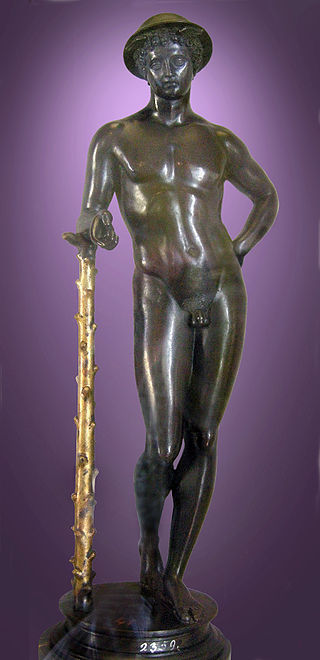
Pier Jacopo Alari Bonacolsi, called L'Antico by his contemporaries, and often Antico in English, the nickname given for the refined interpretation of the Antique they recognized in his work, was a 15th- and 16th-century Italian Renaissance sculptor, known for his finely detailed small bronzes all'Antica—coolly classicizing, often with gilded details, and silver-inlaid eyes, a refinement that is found in some classical and Hellenistic Greek bronzes.
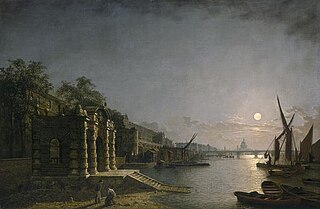
York House was one of a series of grand mansions that formerly stood on the Strand, the principal route from the City of London to the Palace of Westminster.
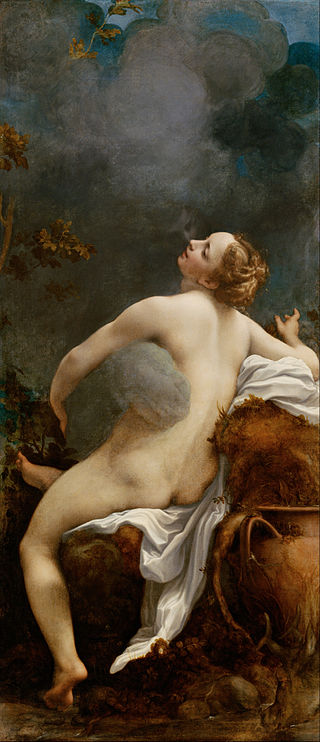
Jupiter and Io is a painting by the Italian High Renaissance artist Antonio da Correggio around 1530. It now hangs in the Kunsthistorisches Museum in Vienna, Austria.

Pierre Francqueville, generally called Pietro Francavilla, was a Franco-Flemish sculptor trained in Florence, who provided sculpture for Italian and French patrons in the elegant Late Mannerist tradition established by Giambologna.

The Venus de' Medici or Medici Venus is a 1.53 m tall Hellenistic marble sculpture depicting the Greek goddess of love Aphrodite. It is a 1st-century BC marble copy, perhaps made in Athens, of a bronze original Greek sculpture, following the type of the Aphrodite of Knidos, which would have been made by a sculptor in the immediate Praxitelean tradition, perhaps at the end of the century. It has become one of the navigation points by which the progress of the Western classical tradition is traced, the references to it outline the changes of taste and the process of classical scholarship. It is housed in the Uffizi Gallery, Florence, Italy.

The Crouching Venus is a Hellenistic model of Venus surprised at her bath. Venus crouches with her right knee close to the ground, turns her head to the right and, in most versions, reaches her right arm over to her left shoulder to cover her breasts. To judge by the number of copies that have been excavated on Roman sites in Italy and France, this variant on Venus seems to have been popular.

Hubert Le Sueur was a French sculptor with the contemporaneous reputation of having trained in Giambologna's Florentine workshop. He assisted Giambologna's foreman, Pietro Tacca, in Paris, in finishing and erecting the equestrian statue of Henri IV on the Pont Neuf. He moved to England and spent the most productive decades of his working career there, providing monuments, portraits and replicas of classical antiquities for the court of Charles I, where his main rival was Francesco Fanelli.

Charles II Gonzaga was the son of Charles of Gonzaga-Nevers of Rethel, Nevers, Mantua, and Montferrat; and Maria Gonzaga. He followed his grandfather Charles I, Duke of Mantua, in 1637 as ruler of these lands, the first ten years under regency of his mother Duchess Maria. On 22 March 1657, Charles II receives the appointment as Imperial Vicar in Italy. Charles sold the Duchies of Nevers and Rethel in 1659 to Cardinal Jules Mazarin, the de facto Regent of France, and they became part of France.

Sir Peter Paul Rubens was a Flemish artist and diplomat. He is considered the most influential artist of the Flemish Baroque tradition. Rubens' highly charged compositions reference erudite aspects of classical and Christian history. His unique and immensely popular Baroque style emphasised movement, colour, and sensuality, which followed the immediate, dramatic artistic style promoted in the Counter-Reformation. Rubens was a painter producing altarpieces, portraits, landscapes, and history paintings of mythological and allegorical subjects. He was also a prolific designer of cartoons for the Flemish tapestry workshops and of frontispieces for the publishers in Antwerp.
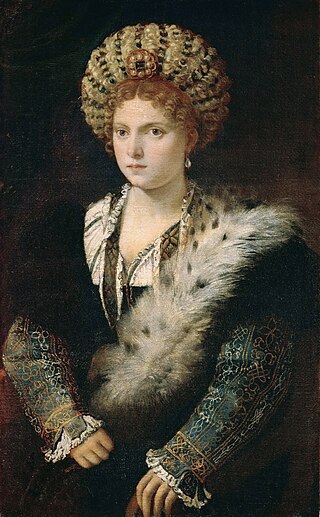
Portrait of Isabella d'Este is an oil on canvas painting of a young woman by Titian. It can be dated to the 1530s and is held in the Kunsthistorisches Museum, in Vienna. The artist and the date are undisputed. Beyond the museum documentation, there are several doubts about the person depicted.

Frans Geffels, known in Italy as Francesco Geffels, was a Flemish painter, printmaker, architect, stage designer and designer of ephemeral structures for solemn and festive occasions. After training in his native Antwerp, he was mainly active in Mantua, where he was prefetto delle fabbriche to the Duke, a role that gave him the direction of the artistic and construction activities undertaken by the Ducal court. He worked also on projects for the local aristocratic class of Mantua. In addition, he completed projects for the Liechtenstein princes and for the imperial court in Vienna.

The Whitehall group is a term applied to a small circle of art connoisseurs, collectors, and patrons, closely associated with King Charles I, who introduced a taste for the Italian old masters to England. The term usually includes the advisors and agents who facilitated the group's acquisition of works of art.

Venus with Mercury and Cupid, The School of Love or The Education of Cupid is a c. 1525 painting by the Italian painter Correggio, now in the National Gallery. It depicts the deities Cupid, Mercury, and Venus.
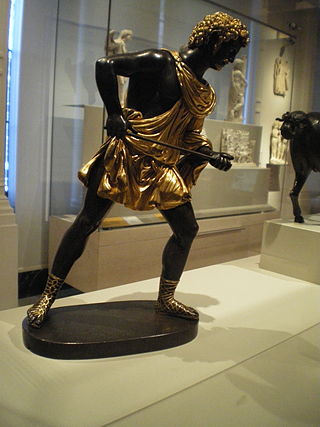
Meleager is a bronze sculpture of the mythological figure Meleager by the Italian Renaissance sculptor Pier Jacopo Alari Bonacolsi, known by his contemporaries as l'Antico, and to art history as Antico. The sculpture is now in the Victoria and Albert Museum in London.

The Fasti of the Gonzagas or Gonzaga Cycle is a 1578-1580 cycle of oil on canvas paintings commissioned from Tintoretto and his workshop by Guglielmo Gonzaga to hang in two of the new rooms he had added to the Palazzo Ducale in Mantua. They celebrate the history of the Gonzaga family, particularly its military triumphs in the 15th and 16th centuries, and remained in the city until being taken to Venice in the early 18th century by the tenth and final Gonzaga duke Ferdinando Carlo Gonzaga. There they were bought in 1708 by Maximilian II Emanuel, Elector of Bavaria for his collection in Munich, where they still hang in the Alte Pinakothek.